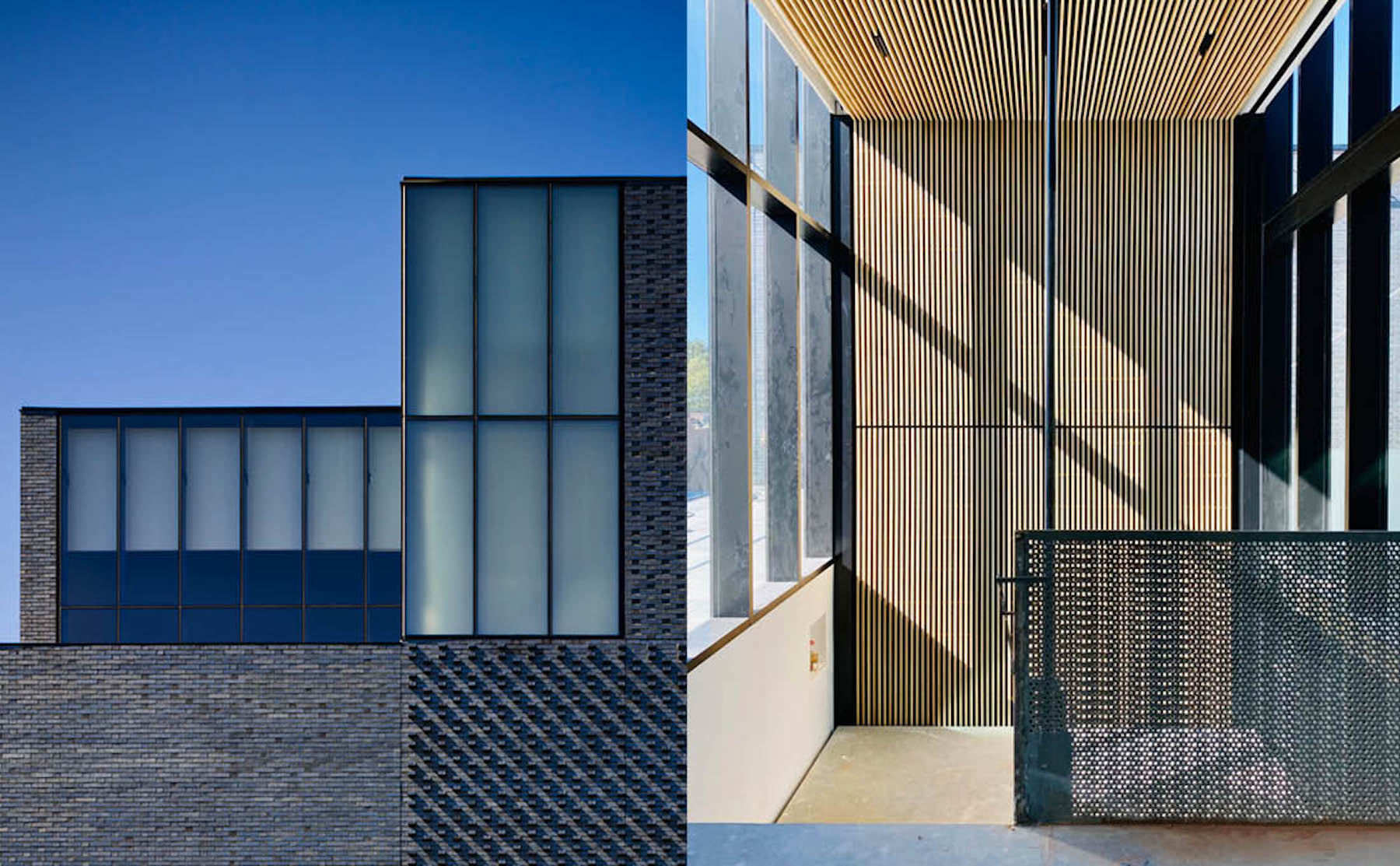The University of Iowa recently completed its new Stanley Museum of Art, a public teaching museum designed by BNIM. The 63,000-square-foot building restores an art museum to the campus after 14 years, following historic flooding in 2008. The Stanley Museum of Art reunites the school with its renowned collections and works, such as Jackson Pollock’s Mural, which had been temporarily held by art institutions around the world.
The University of Iowa Stanley Museum of Art is a public museum for discovering and teaching art, as well as a center for campus connection. The building features a transparent main lobby and a new entry plaza for art displays, performances, social gatherings, and classes. A series of flexible gallery spaces offers students, faculty, and visitors space for observing, discussing, and exploring the collections. The galleries’ proportions allow for faculty to curate collections for teaching and research and for students to learn about curating, which is central to the museum’s mission.
The museum’s upper floors include a visual arts laboratory classroom where the collections can be used for teaching. Collaborative staff and volunteer spaces also support the research and teaching of the collections.
A dark, kinetic brick facade, with alternating brick texture and brick finish, reflects the changing sunlight. The lobby’s glass facade and a series of interconnected voids throughout the building establish connections to natural light and guide the visitor experience. Outdoor terraces also serve as spaces for socializing and school visits.
On the Building Team:
Owner: The University of Iowa
Design architect: BNIM
Architect of record: BNIM
MEP engineer: Design Engineers
Structural engineer: Meyer Borgman Johnson
General contractor/construction manager: Russell Construction
Related Stories
| Aug 11, 2010
Museum celebrates African-American heritage
The Harvey B. Gantt Center for African-American Arts + Culture recently completed construction on the Wells Fargo Cultural Campus in Charlotte, N.C. Designed by the Freelon Group, Durham, N.C., with Batson-Cook's Atlanta office as project manager, the $18.8 million project achieved nearly 100% minority participation.
| Aug 11, 2010
Design for Miami Art Museum triples gallery space
Herzog & de Meuron has completed design development for the Miami Art Museum’s new complex, which will anchor the city’s 29-acre Museum Park, overlooking Biscayne Bay. At 120,000 sf with 32,000 sf of gallery space, the three-story museum will be three times larger than the current facility.
| Aug 11, 2010
Thom Mayne unveils ‘floating cube’ design for the Perot Museum of Nature and Science
Calling it a “living educational tool featuring architecture inspired by nature and science,” Pritzker Prize Laureate Thom Mayne unveiled the schematic designs and building model for the Perot Museum of Nature & Science at Victory Park in Dallas. The $185 million, 180,000-sf structure is 170 feet tall—equivalent to approximately 14 stories—and is conceived as a large...
| Aug 11, 2010
Piano's 'Flying Carpet'
Italian architect Renzo Piano refers to his $294 million, 264,000-sf Modern Wing of the Art Institute of Chicago as a “temple of light.” That's all well and good, but how did Piano and the engineers from London-based Arup create an almost entirely naturally lit interior while still protecting the priceless works of art in the Institute's third-floor galleries from dangerous ultravio...
| Aug 11, 2010
The Art of Reconstruction
The Old Patent Office Building in Washington, D.C., completed in 1867, houses two Smithsonian Institution museums—the National Portrait Gallery and the American Art Museum. Collections include portraits of all U.S. presidents, along with paintings, sculptures, prints, and drawings of numerous historic figures from American history, and the works of more than 7,000 American artists.
| Aug 11, 2010
Silver Award: Please Touch Museum at Memorial Hall Philadelphia, Pa.
Built in 1875 to serve as the art gallery for the Centennial International Exhibition in Fairmount Park, Memorial Hall stands as one of the great civic structures in Philadelphia. The neoclassical building, designed by Fairmount Park Commission engineer Hermann J. Schwarzmann, was one of the first buildings in America to be designed according to the principles of the Beaux Arts movement.







